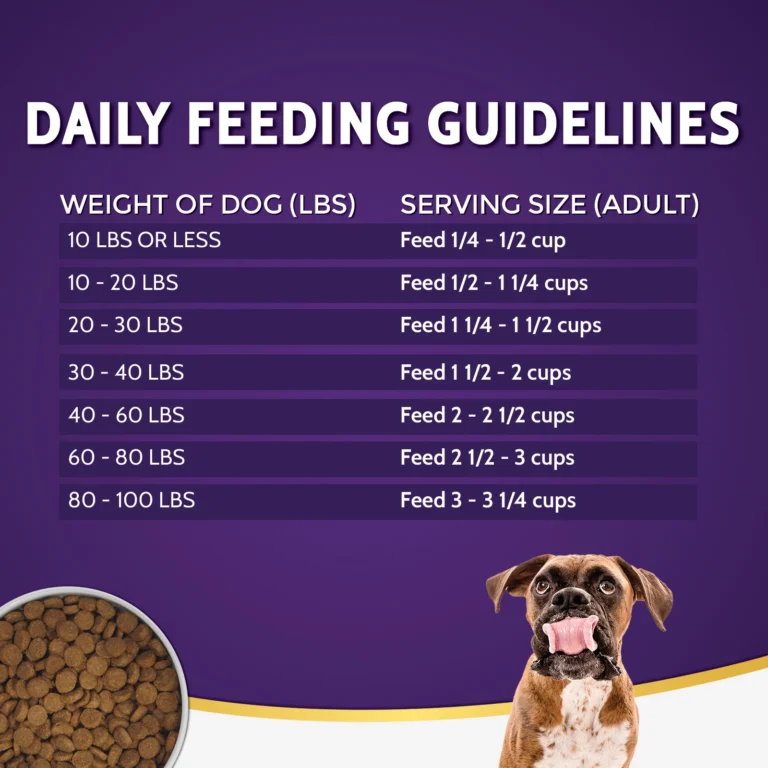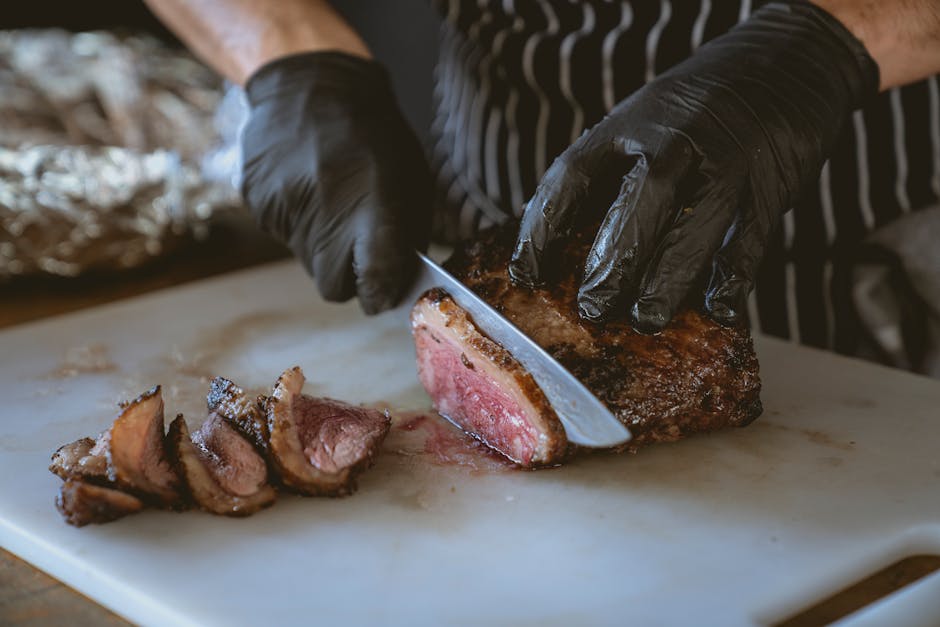If you have a 100-pound dog, you probably wonder exactly how much food they need every day. Feeding your big dog the right amount is important for their health and happiness.
Too little food can leave them hungry and low on energy, while too much can lead to weight gain and other problems. You’ll find clear, easy-to-follow advice that helps you get your dog’s meals just right. Keep reading to discover simple tips that make feeding your large dog stress-free and effective.

Credit: www.petsmart.ca
Daily Calorie Needs
Feeding a 100 lb dog the right amount is important. It helps them stay healthy and energetic. Dogs need calories for daily activities and maintaining their body weight.
Each dog’s calorie needs can vary. Factors such as age, activity level, and health influence these needs.
Factors Influencing Calorie Requirements
Several factors affect how much a 100 lb dog should eat. Understanding these can help in feeding them correctly.
- Age: Puppies need more calories than adult dogs.
- Activity Level: Active dogs need more energy.
- Health: Illness can change calorie needs.
- Breed: Different breeds have different energy needs.
Calculating Maintenance Calories
Calculating maintenance calories helps keep your dog at a healthy weight. It involves simple math based on their weight.
Use a formula to estimate their needs. Multiply their weight in kilograms by 30, then add 70. This gives a basic calorie estimate.
| Weight (kg) | Calories |
| 45 kg (100 lb) | 1,420 calories |

Credit: zignature.com
Choosing The Right Food
Feeding a 100-pound dog needs care in choosing the right food. The right food helps keep your dog healthy and strong.
Knowing what food to pick can be hard. You must think about nutrition, taste, and your dog’s needs.
Dry Vs. Wet Food Options
Dry food is easy to store and usually costs less. It helps keep teeth clean by reducing plaque.
Wet food contains more water and can be tastier for dogs. It may be easier to chew, especially for older dogs.
- Dry food lasts longer once opened
- Wet food can help with hydration
- Dry food is good for teeth health
- Wet food usually has stronger smell and taste
Reading Dog Food Labels
Dog food labels show important facts about the food. Look for the amount of protein, fat, and fiber to match your dog’s needs.
Check the ingredients list. Good food has real meat or fish as the first item. Avoid foods with too many fillers like corn or wheat.
- Protein should be one of the top ingredients
- Fat provides energy but should not be too high
- Fiber helps with digestion and should be moderate
- Avoid artificial colors and preservatives
Portion Size Guidelines
Feeding a 100 lb dog the right amount is important for health. Too much food can cause weight gain.
Too little food can make your dog weak. Use portion size guidelines to feed properly.
Recommended Serving Sizes By Weight
The amount of food depends on your dog’s weight and food type. Dry kibble and wet food have different portions.
A 100 lb dog usually needs about 4 to 6 cups of dry food each day. Split this into two meals.
| Dog Weight | Dry Food (cups/day) | Wet Food (grams/day) |
|---|---|---|
| 80-100 lbs | 3.5 – 5.5 | 900 – 1200 |
| 100 lbs | 4 – 6 | 1000 – 1300 |
| 100-120 lbs | 4.5 – 6.5 | 1100 – 1400 |
Adjusting Portions For Activity Level
Active dogs burn more calories. They need larger portions to stay healthy and energetic.
Less active dogs require smaller portions to prevent weight gain. Adjust food based on daily activity.
- High activity: Increase food by 10% to 20%
- Moderate activity: Feed standard portions
- Low activity: Reduce food by 10% to 15%

Credit: www.nextritionpet.com
Feeding Frequency And Schedule
Feeding a 100 lb dog the right amount is important for health. How often you feed affects their energy and digestion.
A good feeding schedule helps keep your dog happy and strong. Large dogs need regular meal times every day.
Best Times To Feed Large Dogs
Large dogs do best with two meals a day. You can feed them once in the morning and once in the evening.
Try to feed your dog at the same times each day. This helps their body know when to expect food.
- Feed first meal early morning, around 7-8 AM
- Feed second meal early evening, around 5-6 PM
- Avoid feeding right before or after exercise
Benefits Of Consistent Meal Times
Feeding your dog at the same times every day helps digestion. It also keeps their energy steady throughout the day.
Consistent meal times reduce begging and help with training. Your dog learns when to expect food and feels more secure.
- Improves digestion and nutrient absorption
- Keeps energy levels balanced
- Helps control weight by avoiding extra snacks
- Supports better behavior and training
Monitoring Weight And Health
Feeding a 100 lb dog the right amount is important for its health. You need to watch your dog’s weight and overall condition.
Regular checks help catch problems early. This keeps your dog active and happy for a long time.
Signs Of Overfeeding Or Underfeeding
Watch your dog for changes in weight or energy. Too much food can cause weight gain and tiredness.
Too little food may make your dog lose weight and seem weak. Check their coat and appetite too.
- Weight gain or loss
- Low or high energy levels
- Changes in fur shine or texture
- Changes in eating habits
Using Body Condition Scores
Body Condition Scores (BCS) help measure if your dog is at a healthy weight. It looks at fat covering and muscle tone.
Scores range from too thin to obese. A good score means your dog’s ribs and waist are easy to see and feel.
| BCS Level | Description | What to Watch For |
|---|---|---|
| 1-3 (Underweight) | Ribs and bones show easily | Feed more, check health issues |
| 4-5 (Ideal) | Ribs felt but not seen, waist visible | Keep current feeding plan |
| 6-9 (Overweight) | Fat covers ribs, no waist visible | Reduce food, increase exercise |
Special Considerations
Feeding a 100 lb dog needs extra care. Big dogs have different needs than small dogs.
Some dogs need special diets for age or health. Adjusting food helps keep them healthy.
Feeding Senior Or Overweight Dogs
Older dogs burn fewer calories. They need less food to avoid gaining weight.
Overweight dogs need fewer calories and more fiber. This helps them feel full and lose weight safely.
- Feed smaller portions, spread out meals
- Choose low-calorie, high-fiber food
- Check weight regularly and adjust food
- Ask vet before changing diet
Diet Changes For Health Issues
Health problems may require special diets. Kidney, liver, or allergies change what dogs can eat.
Talk to your vet about the right food. Some dogs need prescription diets or supplements.
- Kidney disease: low protein and phosphorus
- Liver issues: easy-to-digest food
- Allergies: limited ingredient diets
- Joint problems: food with added glucosamine
Tips For Transitioning Food
Changing your 100 lb dog’s food needs care. Sudden switches can cause stomach problems. Gradual changes help your dog adjust well.
Watch your dog’s reaction during the change. This helps keep them healthy and happy on the new diet.
Gradual Changes To Avoid Digestive Upset
Start by mixing a small amount of new food with the current food. Slowly increase the new food over 7 to 10 days.
This slow change helps your dog’s stomach adjust. It lowers the risk of diarrhea or vomiting.
- Day 1-3: 25% new food, 75% old food
- Day 4-6: 50% new food, 50% old food
- Day 7-9: 75% new food, 25% old food
- Day 10: 100% new food
Tracking Response To New Diet
Observe your dog’s eating habits and energy levels. Check for changes in stool quality and frequency.
If your dog shows signs of discomfort, slow down the transition or consult a vet. Keep notes on any reactions.
- Monitor appetite daily
- Check stool for consistency and color
- Watch for vomiting or gas
- Note any changes in behavior or energy
Frequently Asked Questions
How Much Food Does A 100 Lb Dog Need Daily?
A 100 lb dog typically needs 2. 5 to 4 cups of dry food daily. The exact amount depends on age, activity, and metabolism. Always follow your dog’s food label guidelines and adjust as needed for weight management.
What Type Of Food Is Best For A 100 Lb Dog?
High-quality dry kibble formulated for large breeds is ideal. It supports joint health and digestion. Include protein-rich and balanced nutrition to maintain muscle mass and energy levels in a 100 lb dog.
How Often Should I Feed My 100 Lb Dog?
Feed your 100 lb dog twice a day, once in the morning and once in the evening. This helps regulate digestion and energy levels. Puppies may require more frequent meals.
Can I Feed My 100 Lb Dog Homemade Food?
Yes, but homemade meals must be balanced and nutritious. Consult a vet or pet nutritionist to create a safe meal plan. Avoid harmful ingredients like onions, chocolate, and excessive fats.
Conclusion
Feeding a 100 lb dog takes careful thought and attention. Dogs need the right amount of food to stay healthy and active. Check your dog’s age, activity level, and health when deciding portions. Measure food daily to avoid overfeeding or underfeeding.
Watch your dog’s weight and energy for signs to adjust meals. Talk to your vet for advice tailored to your dog’s needs. Feeding well means a happy, healthy dog every day. Simple steps make a big difference in your dog’s life.

